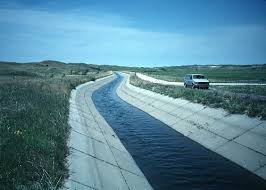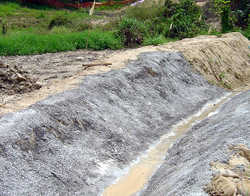An open channel is a conduit in which water flows with a free surface. The free surface is subjected to atmospheric pressure. The classification of open channels is made based on different criteria as follows.
- Classification Type 1
- Natural Channels
- Artificial Channels
- Classification Type 2
- Prismatic Channels
- Non-prismatic Channels
- Classification Type 3
- Rigid Boundary Channels
- Mobile Boundary Channels
- Classification Type 4
- Small Slope Channels
- Large Slope Channels
Natural open channels include all channels that exist naturally on the earth. They are generally very irregular in shape.
Example: Rivers, tidal estuaries, etc.
Artificial open channels are the channels developed by men. They are usually designed with regular geometric shapes.
Examples: Irrigation canals, laboratory flumes, spillway chutes, drops, culverts, roadside gutters, etc.
A channel with an unvarying cross-section and a constant bottom slope is called a prismatic channel. All artificial channels are usually prismatic. The rectangular, trapezoid, parabola, and circle are the most commonly used shapes of prismatic channels.
A channel with either a varying cross-section or a varying bottom slope is called a non-prismatic channel. The natural channels are usually prismatic.

A channel with an immovable bed and sides is known as a rigid boundary channel.
Example: Lined canals, sewers, and non-erodible unlined canals.

If a channel boundary is composed of loose sedimentary particles moving under the action of flowing water, the channel is called a mobile boundary channel.
Example: An alluvial channel is a mobile boundary channel transporting the same type of material comprising the channel perimeter.
An open channel having a bottom slope of less than 1 in 10 is called a channel of a small slope (Chow, 1959). The slopes of ordinary channels, natural or artificial, are far less than 1 in 10.
An open channel having a bottom slope greater than 1 in 10 is called a channel of a small slope (Chow, 1959). Some artificial channels like drops and chutes have far more than 1 in 10.

